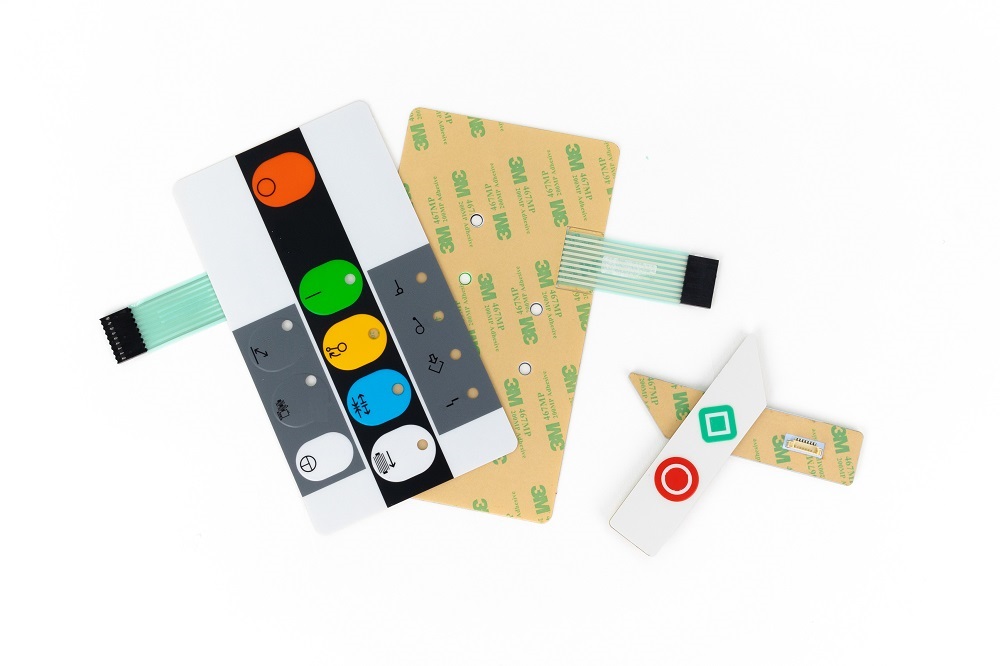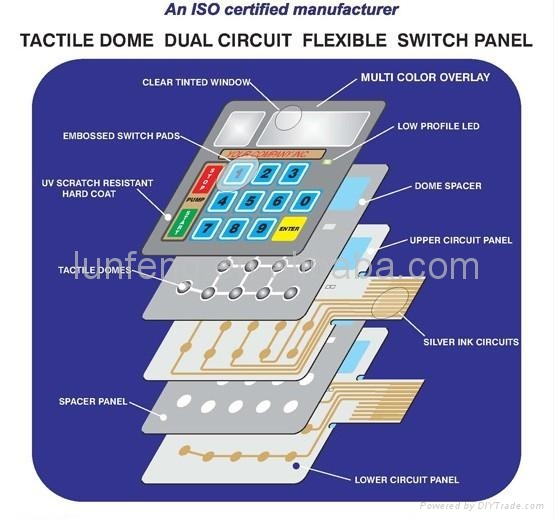How Membrane Switch Technology is Revolutionizing User Interfaces
How Membrane Switch Technology is Revolutionizing User Interfaces
Blog Article
Comprehending Membrane Layer Changes: The Trick to Resilient and Reliable Controls

What Are Membrane Switches?
Membrane layer buttons are an innovative solution in the realm of interface innovation, integrating capability and layout seamlessly. These devices act as an interface between individuals and electronic systems, integrating a number of elements into a small style. Normally created from adaptable, slim layers of products, membrane layer buttons are created to reply to touch, allowing individuals to engage with equipment and digital gadgets properly.
The key components of a membrane layer button include a printed circuit layer, graphic overlay, and a spacer layer that prevents unintended activation. The visuals overlay can be personalized to mirror brand name identification or individual preferences, enhancing looks while making certain functionality. Membrane switches are generally made use of in different applications, including medical tools, consumer electronics, and commercial devices, owing to their toughness and resistance to environmental elements such as dampness and dirt.
One of the key benefits of membrane switches is their capacity to hold up against deterioration, making them optimal for high-traffic environments. In addition, they are light-weight and require marginal area, permitting cutting-edge styles in product growth. In general, membrane switches represent a effective and practical choice for modern-day electronic user interfaces, weding innovation with user-centric style concepts.
Exactly How Membrane Layer Changes Job
The operation of membrane layer switches joints on an easy yet reliable mechanism that converts user input into digital signals. These switches contain multiple layers, normally including a graphic overlay, a spacer layer, and a circuit layer. When a customer presses the switch, the leading layer flaws, allowing a conductive aspect in the circuit layer to reach a matching conductive pad on the bottom of the visuals overlay. This contact shuts the circuit and sends out an electronic signal to the device, showing that the button has been triggered.
The style of membrane layer buttons can differ, but they typically integrate domes or responsive components to provide feedback to the user, improving the general experience - membrane switch. The products utilized in membrane layer buttons, such as polyester or polycarbonate, add to their durability and resistance to environmental elements, including moisture and dust. Additionally, the printed circuits are normally enveloped, which shields them from wear and tear over time.
Benefits of Membrane Layer Buttons

In addition, membrane buttons are known for their durability. Built from robust materials, they are immune to dust, dampness, and physical wear, which considerably prolongs their lifespan contrasted to standard mechanical switches. This toughness makes them particularly ideal for high-traffic environments and applications calling for longevity.
Another considerable benefit is the simplicity of cleansing and upkeep. The smooth surface area of membrane layer switches reduces dirt buildup and is typically impervious to spills, making them suitable for settings that need frequent sanitization.
In addition, membrane layer browse around this web-site buttons supply a structured profile, leading to a thinner design that can be integrated right into numerous devices without adding bulk. This function not just boosts the visual appeal however also adds to an extra ergonomic product design.
Applications of Membrane Layer Switches
Flexible and easy to use, membrane switches find applications throughout a wide variety of markets, including medical tools, customer electronic devices, and commercial devices. In the medical field, these buttons are important to gadgets such as analysis equipment, client tracking systems, and mixture pumps, where dependability and convenience of cleaning are vital. Their capacity to keep and stand up to harsh atmospheres performance makes them optimal for such applications.

In customer electronics, membrane switches are used in products like microwaves, washing equipments, and remotes - membrane switch. Their smooth style enables intuitive user interfaces, boosting the overall user experience while giving resilience and resistance to damage
Industrial equipment likewise profits from membrane layer buttons, particularly in control panels for machinery and automation systems. These buttons provide security versus dust and moisture, making sure regular performance in challenging environments. In addition, their personalized attributes enable makers to customize them to certain functional demands, boosting performance and capability.
Picking the Right Membrane Change
When picking a membrane layer button, it is vital read review to think about various aspects that influence performance and viability for details applications. The primary factors to consider include environmental problems, tactile responses, durability, and layout requirements.
First, analyze the operating environment; buttons subjected to moisture, chemicals, or severe temperature levels call for particular materials to make certain durability and functionality. Next off, review the need for tactile responses. Relying on user communication, some applications may take advantage of a responsive feedback to verify activation, while others may prefer a non-tactile layout for visual factors.
Sturdiness is one more vital factor; membrane switches should be created to withstand constant usage, influences, and abrasion. Guarantee the selected switch can endure the anticipated lifecycle, especially in high-usage situations.

Verdict
In final thought, membrane layer switches function as vital components in the layout of dependable and durable control systems throughout various sectors. Their small layout, incorporated with durable construction and personalized functions, improves individual interaction while making sure long life in requiring atmospheres. The convenience of membrane layer switches enables tailored options that fulfill details functional needs, reinforcing their importance in modern-day technology. As industries remain to advance, the relevance of integrating effective membrane switch remedies can not be overstated.
Membrane layer switches stand for an essential aspect of modern-day interface style, mixing capability with strength in different applications.Membrane switches are an innovative solution in the world of user interface technology, incorporating performance and design perfectly. Generally created from adaptable, thin layers of materials, membrane switches are made to react to touch, making it possible for users to interact with machinery and electronic devices efficiently.
The style of membrane layer buttons can vary, but they often incorporate domes or tactile components to provide feedback to the user, enhancing the general experience.In final thought, membrane changes serve as necessary components in the layout of sturdy and dependable control systems throughout various industries.
Report this page